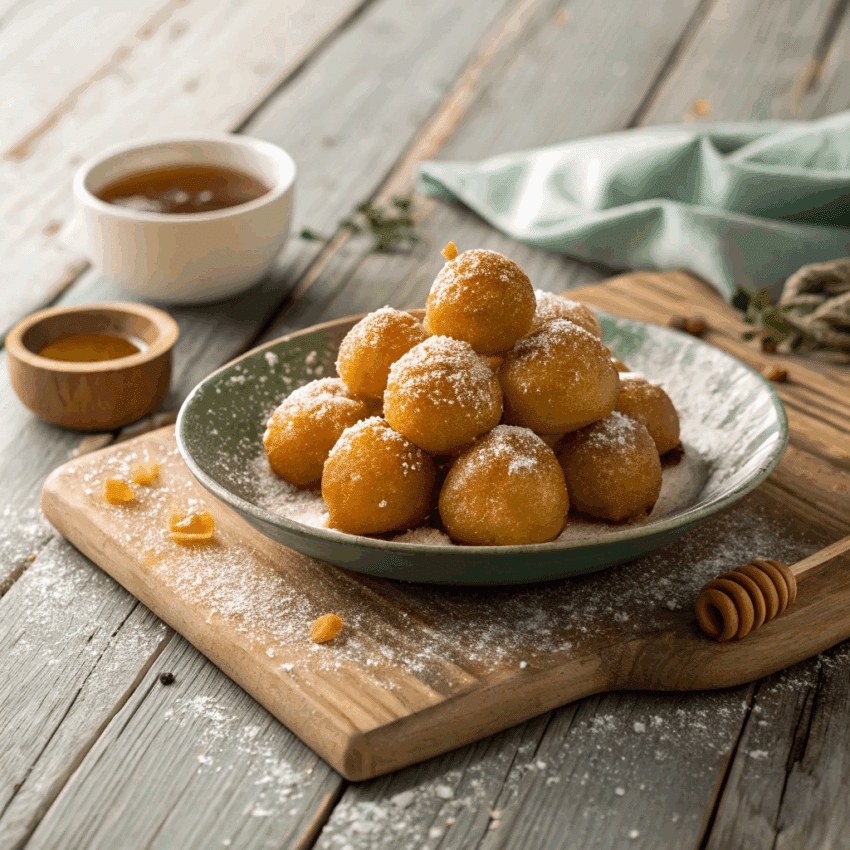If you’ve ever strolled through the streets of Cairo or visited a family gathering in Lebanon, chances are you’ve seen a plate piled high with golden fritters, dripping with syrup. Those little bite-sized beauties are Egyptian zalabya sweet fritters—crispy on the outside, fluffy inside, and absolutely addictive. Think of them as the Middle Eastern cousin of donuts, but lighter, crunchier, and easier to pop in your mouth.
I grew up obsessed with desserts, but the first time I tried zalabya, it was a revelation. One fritter turned into three, and before I knew it, the whole plate was gone. These are the kinds of sweets you don’t just eat—you share, you laugh over, you reach for another before the syrup even dries on your fingers.
Today, I’m showing you how to make this classic zalabia recipe Egyptian food lovers swear by. No fancy equipment, no complicated steps—just a bowl, some pantry staples, and a frying pan.
What Are Zalabya Sweet Fritters?
At their core, zalabya (sometimes written as zalabia or loukoumades in other regions) are small, deep-fried dough balls soaked in sugar syrup or dusted with powdered sugar. Egyptians often call them “loqmet el qadi,” which translates to “judge’s bites.” I’ve always found that name funny—were the judges the first to hoard them? Either way, the tradition stuck.
But zalabya isn’t just an Egyptian treat. Variations pop up all across the Middle East:
- In Lebanese cuisine, they’re a staple during Ramadan evenings.
- In Syrian kitchens, they’re affectionately known as Middle Eastern donuts.
- Across the Mediterranean, they connect to Greek loukoumades and Turkish lokma.
This makes them a dessert with stories, linking kitchens from Cairo to Beirut, and even beyond.
Ingredients for Egyptian Zalabya
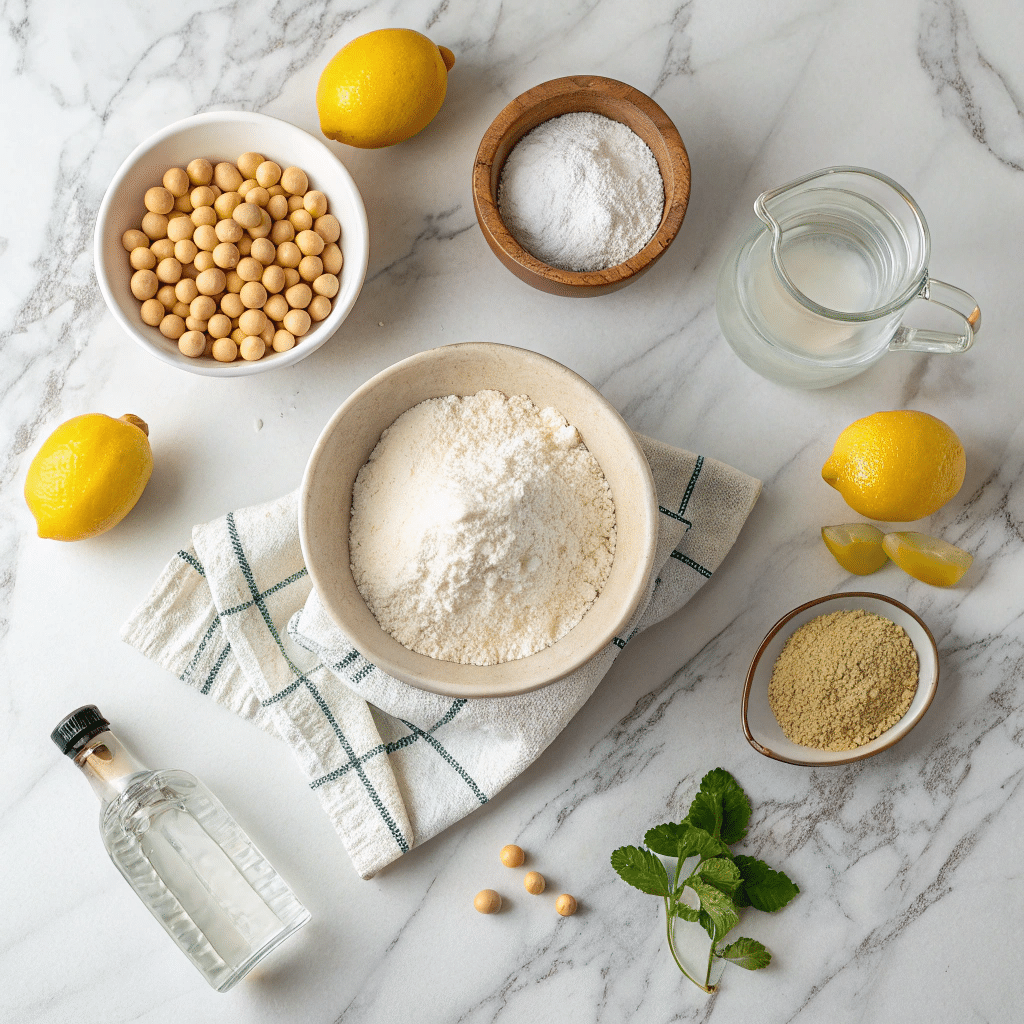
The beauty of Egyptian desserts like this one is simplicity. You don’t need rare spices or hard-to-find flours. Just a few basics:
- 2 cups all-purpose flour
- 1 tablespoon cornstarch (adds lightness)
- 1 teaspoon instant yeast
- 1 tablespoon sugar
- 1 ¼ cups warm water (adjust if needed)
- Pinch of salt
- Vegetable oil for frying
For the Syrup:
- 2 cups sugar
- 1 cup water
- 1 teaspoon lemon juice
- ½ teaspoon rosewater or orange blossom water (optional but heavenly)
That’s it. Everyday pantry items come together to create something extraordinary.
Step-by-Step Zalabya Recipe
Here’s where the fun begins.
- Mix the dough. In a bowl, whisk flour, cornstarch, yeast, sugar, and salt. Add warm water slowly, mixing until you have a smooth, sticky batter. The dough should be looser than bread dough—almost pourable.
- Let it rest. Cover the bowl and leave it in a warm spot for about an hour. The yeast will do its magic, and you’ll see bubbles forming. This step is what gives you that airy interior.
- Prepare the syrup. While waiting, cook sugar and water in a small pot. Once boiling, reduce to medium and add lemon juice. Let it simmer until slightly thickened, about 10 minutes. If you love fragrant Middle Eastern desserts, add rosewater or orange blossom water at the end. Cool completely before using.
- Heat the oil. Fill a deep pot with oil, about 2 inches deep, and heat to 350°F (175°C). Test with a small drop of batter—it should sizzle immediately.
- Shape and fry. Scoop small portions of batter with a spoon (or your fingers if you’re brave) and drop them gently into the hot oil. Fry in batches until golden brown, turning often so they cook evenly.
- Dip or drizzle. Once crispy, remove fritters with a slotted spoon, drain quickly, then dunk them straight into the cooled syrup. Toss until coated, or drizzle syrup over them on a platter.
- Serve immediately. Zalabya is best enjoyed hot and fresh, when the outside is crunchy, and the inside is soft like a pillow.
Tips for Perfect Zalabya
- Don’t rush the yeast. If the dough doesn’t bubble, your fritters will be dense.
- Keep oil temperature steady. Too hot, and they’ll burn outside while staying raw inside. Too cold, and they’ll soak up oil.
- Serve fast. Zalabya doesn’t like waiting around. They lose crispiness after a few hours, so share them right away.
- Switch up the topping. Syrup is traditional, but powdered sugar, honey, or even Nutella make fun twists.
A Little History Behind Zalabya
Food always carries stories, and zalabya is no exception. These fritters go back centuries, showing up in Arabic cookbooks as early as the 13th century. They were often prepared for celebrations—weddings, Ramadan nights, or just family gatherings.
I once heard an Egyptian friend say, “If there’s zalabya on the table, no one leaves unhappy.” And honestly, that checks out. They’re so easy to share, and because they’re bite-sized, you don’t feel guilty reaching for one more.
Over time, the recipe spread across borders, with each culture adding its own twist. Some use anise seeds for flavor, others add sesame, while some dust them with powdered sugar instead of syrup. What stays the same? The joy these fritters bring.
Variations Across the Middle East
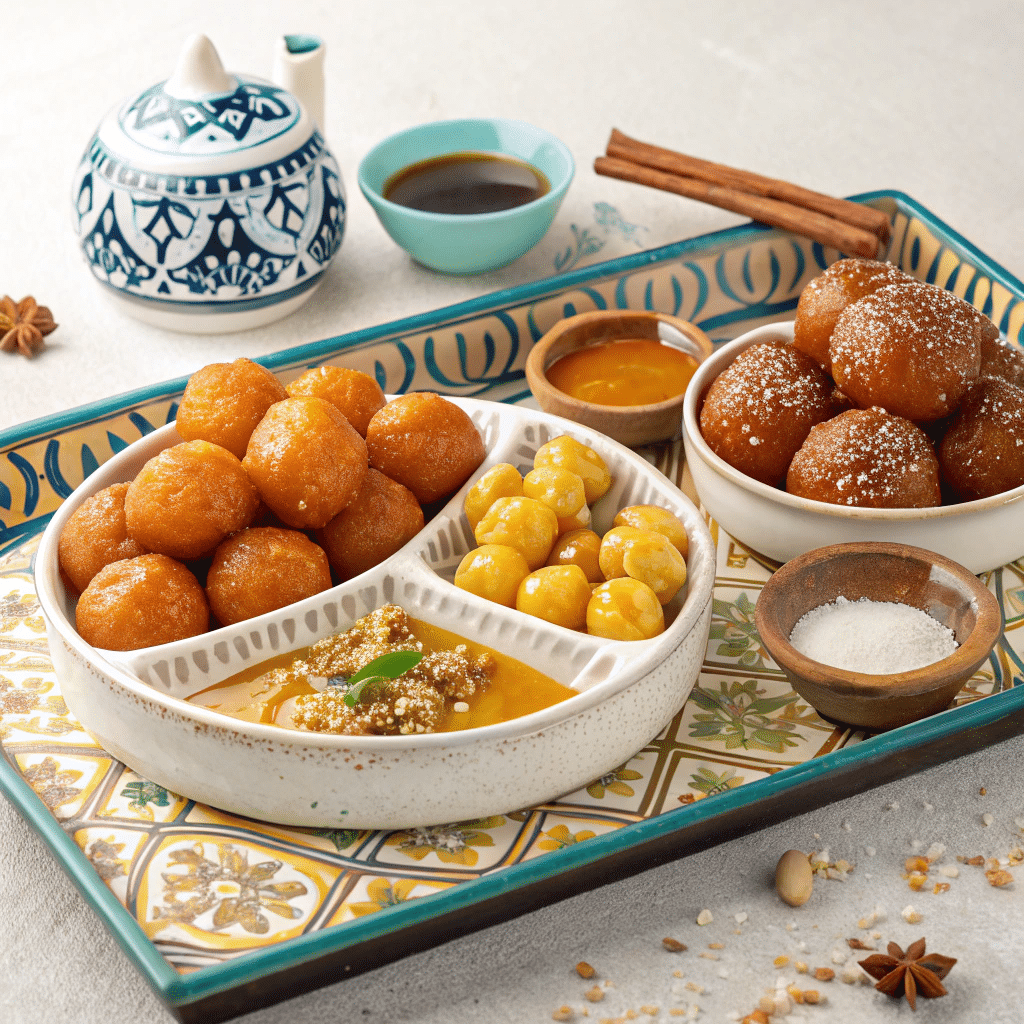
Though the zalabia recipe is a classic Egyptian food treasure, you’ll see it under many names:
- Lebanese sweet fritters: Lighter, sometimes flavored with orange blossom water. Popular during Ramadan nights.
- Syrian donuts: Similar dough, often dunked in extra-thick syrup. Perfect with strong Arabic coffee.
- Mediterranean desserts: In Greece, they’re loukoumades—drizzled with honey and sprinkled with cinnamon.
- Middle Eastern crescent-shaped dessert: In some areas, the batter is shaped differently, almost like tiny crescents, before frying.
Isn’t it fascinating how one dough can travel, adapt, and yet still feel familiar?
Why You’ll Love This Zalabya Recipe
Making zalabya at home isn’t just about dessert. It’s about connection—connecting with history, with cultures across the Middle East, and with anyone lucky enough to share your plate.
Here’s why this recipe always wins people over:
- Simple pantry staples. No complicated ingredients.
- Quick frying. Once the dough rests, the cooking takes just minutes.
- Versatile toppings. Syrup, powdered sugar, honey, or even melted chocolate.
- Crowd-pleaser. Great for family gatherings, parties, or late-night sweet cravings.
To me, zalabya feels like the Middle Eastern version of comfort food. Warm, crispy, and sweet—it hits every craving at once.
Serving Ideas
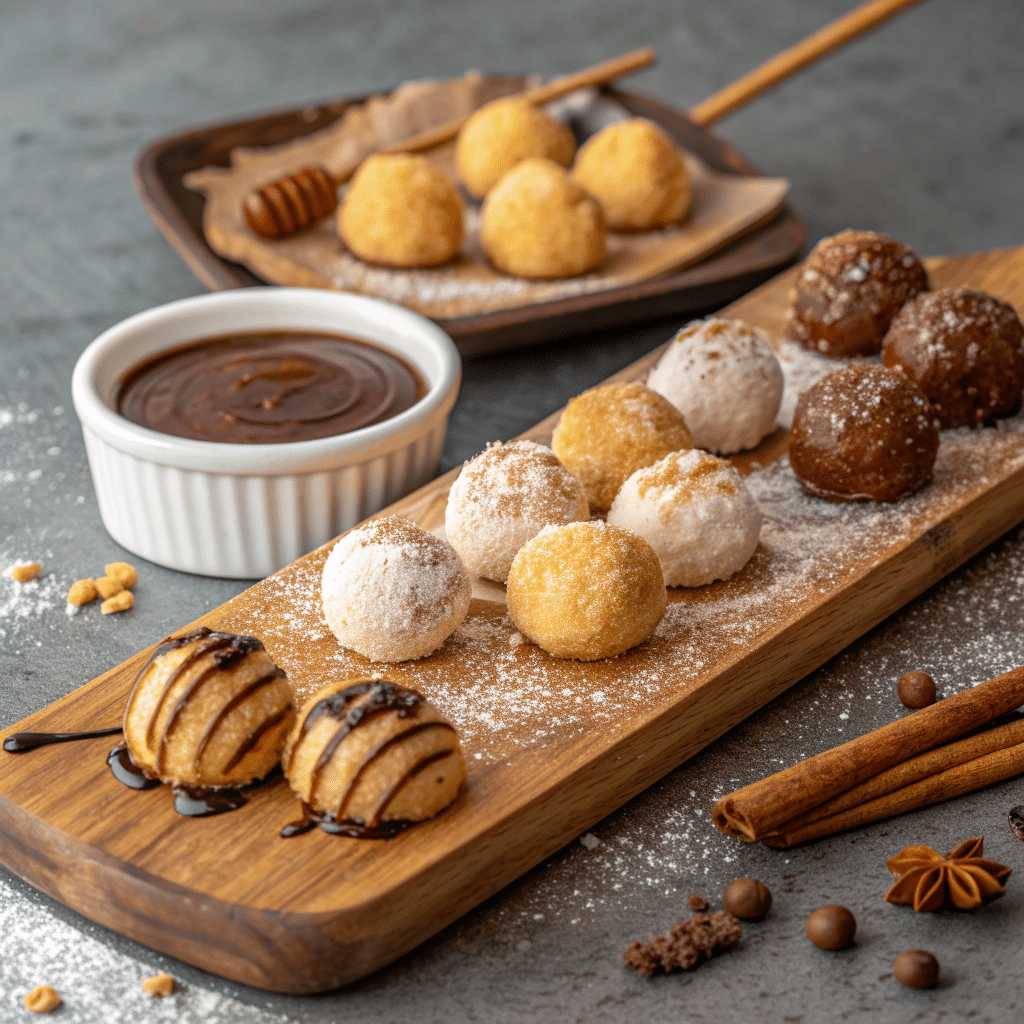
While traditionalists will always dunk zalabya in sugar syrup, you can get creative.
- Dust with powdered sugar. Quick, easy, and less sticky for kids.
- Drizzle with honey. Adds depth and a floral sweetness.
- Sprinkle cinnamon. Perfect if you want a more Mediterranean desserts vibe.
- Go fusion. Dip in Nutella or coat with caramel for a playful twist.
Pro tip: If you’re making these for guests, set up a “zalabya bar” with different toppings. Let people dunk, drizzle, or dust to their liking. It’s messy fun, but that’s part of the charm.
Final Thoughts
There’s something magical about Egyptian zalabya sweet fritters. They’re crispy, golden, and have a way of bringing people together. Every bite is a little celebration—whether you’re remembering childhood kitchen memories or just craving something sweet on a Tuesday night.
So grab your mixing bowl, heat that oil, and get frying. Your kitchen will smell amazing, and your taste buds will thank you.
Trust me, once you’ve tried making zalabya at home, you’ll find yourself whipping up these little “judge’s bites” more often than you think. And the best part? They disappear just as quickly as they’re made.
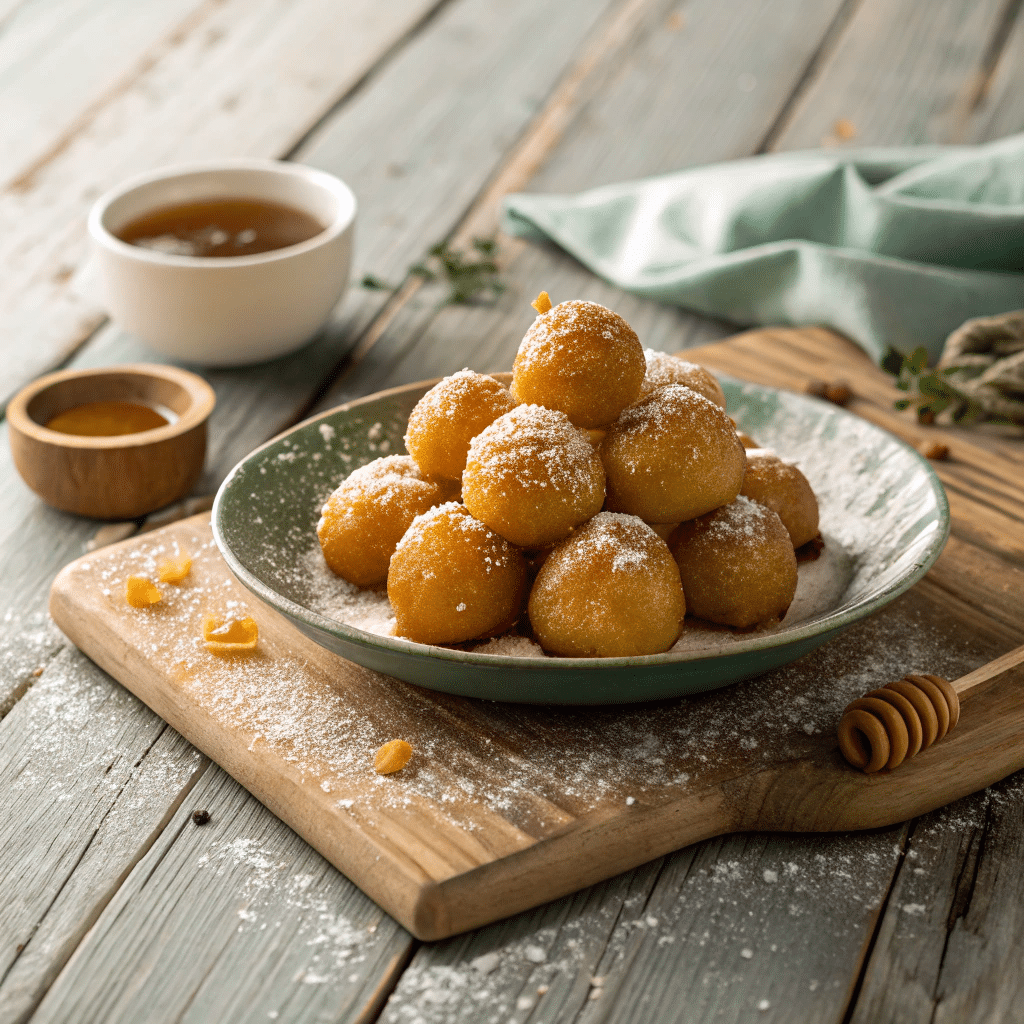
Egyptian Zalabya Sweet Fritters
Ingredients
Method
- Mix the dough. In a bowl, combine flour, cornstarch, yeast, sugar, and salt. Slowly add warm water while mixing until you get a smooth, sticky batter.
- Let it rise. Cover the bowl and let it rest in a warm place for about 1 hour until bubbly.
- Prepare the syrup. In a saucepan, boil sugar and water together. Add lemon juice and simmer 10 minutes until slightly thick. Stir in rosewater if using. Cool completely.
- Heat the oil. Pour oil into a deep pan, about 2 inches deep. Heat to 350°F (175°C).
- Shape and fry. Scoop small spoonfuls of batter and drop them carefully into hot oil. Fry until golden brown, turning often.
- Coat with syrup. Remove fritters with a slotted spoon, drain quickly, and toss in cooled syrup until well coated.
- Serve hot. Eat right away for the best crunch.
Notes
- Make the syrup in advance so it’s cool when the fritters come out of the oil. Hot syrup will make them soggy.
- Eat them fresh—these fritters lose their crunch after a few hours.
- Powdered sugar is a good alternative if you prefer a lighter topping.
FAQs About Egyptian Zalabya Sweet Fritters
1. What’s the difference between zalabya and donuts?
Donuts are usually made from a thicker dough and often filled or glazed. Zalabya is lighter, bite-sized, and always fried to extra crispiness before being coated in syrup or sugar.
2. Can I make zalabya ahead of time?
You can prep the batter a few hours early and keep it in the fridge. But fry them just before serving—fresh is best.
3. Can I bake zalabya instead of frying?
Technically, yes. But the result won’t be the same. The signature crunch comes from frying.
4. What oil is best for frying zalabya?
Neutral oils like canola, sunflower, or vegetable oil work best. Avoid olive oil—it’s too strong in flavor.
5. How do I keep them crispy longer?
Toss them in syrup just before serving. If they sit too long in the syrup, they’ll soften.
6. Are zalabya only for Ramadan?
Not at all! While they’re popular during Ramadan, they’re enjoyed year-round as a fun snack or dessert.

